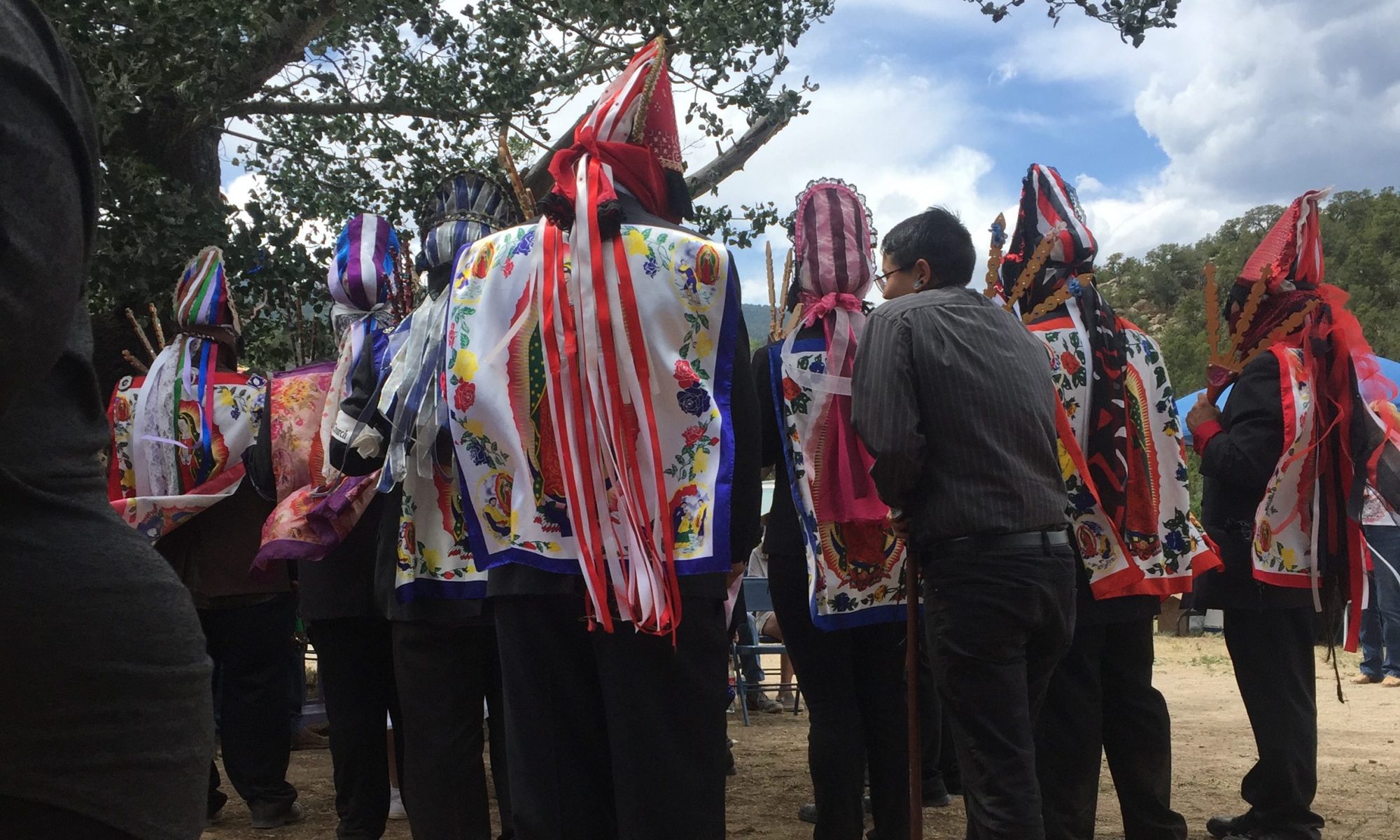The conference took place at the Cañon de Carnue Land Grant on the 23rd & 24th of August, 2019. Below you can see the agenda for this meaningful experience.

- Blessing by Linda Gutierrez, Vice President of the Cañón de Carnué Land Grant
- Welcome by Moises Gonzales, President of the Cañón de Carnué Land Grant
- Genízaro Geneology, History and DNA, Miguel Torrez
- Genízara y Mestiza Testimonials and Stories of Belonging
- A testimonial of the search for Genizara Consciousness from a Mestiza
- Nichole Poncho-Garcia
- A testimonial on Healing, Dancing, Leadership and a Journey to Standing Rock
- Linda Gutierrez, Vice President of the Cañón de Carnué Land Grant
- Experiences With Learning Curandero Skills
- Thomas A. Chavez, Assistant Professor, Respondent and Scholar, UNM
- A testimonial of the search for Genizara Consciousness from a Mestiza
- Slavery in the Southwest, Genízaro Identity and Dignity and the Law, Book
- Bill Piatt, Professor St. Mary’s University School of Law
- Literary Narratives of Genizar@ Stories and Imaginaries
- La Coyota Perejundia, Moises Gonzales, Author
- Stories of the Manzano Mountains and Essays, Judy Alderete Garcia
- Recent Scholarship on Topics of Identity and Resistance to Erasure
- Resisting Erasure. An Introduction to Genealogical Issues in Tracing Genízaro Identity
- Alexandria Garcia, Doctoral student at University of the Pacific
- Silver and Slavery: Blood memory, Matachines mapping, and Preservation of Raramuri culture within the Raramuri
- Diego Medina, School for Advanced Research
- Resisting Erasure. An Introduction to Genealogical Issues in Tracing Genízaro Identity
- Nación Genízara, Ethnogenesis, Place, and Identity in New Mexico, Book Preview
- Facilitated by Co-Editor Enrique R. Lamadrid
- Foreword – Recordando el Futuro (Remembering the Future): Mal-Criados,
- Memory, and Memorials: Estevan Rael-Gálvez
- Introduction Nación Genízara: Ethnogenesis, Place, and Identity in New Mexico
- Enrique R. Lamadrid and Moises Gonzales
- Chapter One: Visualizing Genízaro Cultural Memory and Ritual Celebration
- Miguel A. Gandert
- Chapter Two: Mexican Indians and Genízaros: Soldier-Farmer Allies in the Defense and Agricultural Development of New Mexico
- Tomás Martínez Saldaña, Enrique R. Lamadrid,and José A. Rivera
- Chapter Three: Genízaros and Cultural Systems of Slavery in the Hispanic Southwest
- William S. Kiser
- Chapter Four: Genízara Self-Advocacy in Eighteenth-Century New Mexico
- Cristina Durán
- *Chapter Five: The Genízaro Origins of the Hermanos Penitentes
- Ramón A. Gutiérrez
- Chapter Six: The Colonial Genízaro Mission Pueblo of Belén
- Samuel E. Sisneros
- Chapter Seven: Genízaro Ethnogenesis and the Archaeological Record
- Charles M. Carrillo
- Chapter Eight: Survival of Captivity: Hybrid Identities, Gender, and Culture in Territorial Colorado
- Virginia Sánchez
- Chapter Nine: Genízaro Settlements of the Sierra Sandía: Resilience and Identity in the Land Grants of San Miguel del Cañón de Carnué and San Antonio de las Huertas
- Moises Gonzales
- Chapter Ten: Huellas de Sangre, Amor, y Lágrimas: Rescatando a Mis Cautivas Trails of Blood, Love, and Tears: Rescuing My Captives
- Susan M. Gandert
- Chapter Eleven: Genízaro Salvation: The Poetics of G. Benito Córdova’s Genízaro Nation
- Michael L. Trujillo
- Chapter Twelve: Sangre de Indio que Corre en Mis Venas: Nativo Poetics and Nuevomexicano Identity
- Levi Romero
- Chapter Thirteen: Genízaro Identity and DNA: The Helix of Our Native American Genetic History
- Miguel A. Tórrez
- Chapter Fourteen & Epilogue: Persistence and Resistance in Genízaro Identity
- Teresa Córdova
